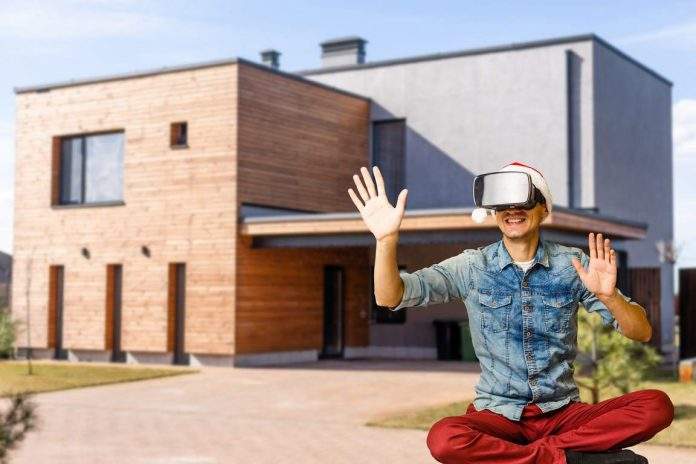By: CJ Mathews, Vice President of Marketing at Ashar Group
Technology has profoundly transformed the real estate landscape over the past decade, reshaping how people buy and interact with properties. Unlike other sectors where digital tools have enhanced efficiency, real estate is experiencing a transformative shift through Virtual Reality (VR) and Artificial Intelligence (AI). VR-powered immersive tours, supported by advanced hardware, are changing how buyers explore and evaluate properties remotely. This streamlines the property search process, enabling a more informed buying experience.
Among the major beneficiaries of this transformation are Non-Resident Indians (NRIs) and working professionals. For NRIs, travelling frequently to India for property viewings is often not feasible. Virtual Reality and Augmented Reality offer immersive 3D property tours that allow users to walk through an apartment or bungalow virtually, anywhere in the world. These virtual tools replicate real-time conditions and provide detailed layouts, finishing, and space perspectives. As a result, NRIs can make informed purchase decisions without setting foot on Indian soil.
The impact of these technologies is visible in buyer engagement. This rise in digital interaction highlights a growing consumer preference for interactive and informative property experiences. As property buying becomes increasingly digital-first, developers are now incorporating VR and AR solutions as essential to their sales strategies.
Key Technologies Enhancing Property Buying in 2025
1. AI-Powered Property Recommendations
Artificial Intelligence has changed the property search process by personalising the journey for each buyer. Algorithms analyse user behaviour, preferences, budget ranges, and lifestyle choices to suggest properties that best match their needs. Instead of scrolling through hundreds of listings, buyers now receive refined selections generated by AI-driven platforms, tailored to their unique profiles. This accelerates decision-making and helps them focus on high-potential options.
2. Virtual and Augmented Reality Tours
Virtual Reality (VR) and Augmented Reality (AR) are redefining the property viewing experience in real estate. Buyers can now explore entire projects virtually—assessing sunlight patterns, visualising interiors, and simulating customised layouts, all from the comfort of their devices. Developers utilise these technologies to create guided walkthroughs and interactive models, enabling seamless navigation from room to room. This eliminates geographical and time constraints for international buyers or busy professionals while also supporting the onboarding of channel partners and their clients. Additionally, it opens up new avenues for marketing through alternative digital channels, making the overall sales process more efficient and engaging.
3. AI-Driven Market Analysis
Advanced AI tools now provide real-time data analysis on property values, infrastructure developments, upcoming civic projects, and demographic trends. This helps buyers understand not just the current market rate but also gives a glance into the future appreciation potential of a property. AI can analyse thousands of data points to identify whether an area will likely see a price rise due to infrastructure upgrades or increasing demand. Platforms like Housivity, powered by AI, help reduce property search time by up to 70%, eliminate fraudulent listings, and offer immersive AR tours, delivering a seamless and stress-free property buying experience.
4. Smart Chatbots and Virtual Assistants
Customer support in real estate is transforming with the rise of smart virtual assistants. These AI-powered chatbots are available 24/7, enabling users to schedule property visits, resolve common queries, and navigate the documentation process more efficiently. Platforms like Square Yards and Magicbricks have adopted AI-driven tools that assist users through digital paperwork and verification, streamlining what was once a manual and time-consuming process. With multilingual capabilities, these assistants cater to India’s diverse user base, making the buyer journey faster, more transparent, and easier to navigate at every stage.
5. Blockchain for Secure Transactions
One of the most revolutionary innovations in real estate is the use of blockchain technology for secure and transparent transactions. All property records, ownership documents, and transaction histories can now be stored in an immutable digital ledger. This eliminates fraud, reduces paperwork, and speeds up the legal processes involved in property purchases. Blockchain also supports smart contracts, which automatically execute actions, such as fund transfers or registrations, once pre-set conditions are met. This enhances trust and safety for both buyers and developers.
Impact of Technology on the Real Estate Market
Technology has brought transparency, personalisation, and efficiency to the Indian real estate sector. Homebuyers no longer have to rely solely on broker narratives or static brochures from channel partners. With AI-powered insights and immersive VR tours, they can independently evaluate properties based on tangible data and interactive experiences. This empowerment has led to higher confidence and quicker decision-making.
Additionally, real estate platforms now function as comprehensive ecosystems. Increased access to reliable data and visualisation tools benefits developers by enabling them to track buyer behaviour, tailor marketing campaigns, and reduce inventory overhang, if any. As technology evolves, features such as AI-driven interior customisation, metaverse-based project launches, and drone-powered site documentation are expected to shape the next phase of real estate innovation
In conclusion, infusing advanced technologies like AI, VR, AR, and blockchain into real estate has revolutionised property buying. It has made the process more efficient, transparent, and user-centric, particularly for non-resident Indians (NRIs) and working professionals. As these technologies become standard, they promise to further elevate the experience, making homeownership smarter and more accessible for the modern buyer.

